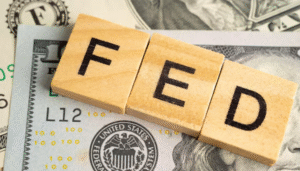# Looking Into CDW’s Recent Short Interest: What Investors Need to Know
**Ticker Symbols:** $CDW $SPY
**Hashtags:** #StockMarket #CDW #Investing #ShortInterest #MarketTrends #FinanceNews #Trading #WallStreet
—
## CDW’s Short Interest: A Critical Market Indicator
CDW Corporation ($CDW), a leading provider of IT solutions, has seen notable changes in its short interest. Short interest is an essential market metric that reflects investor sentiment and potential stock price volatility. Understanding these changes can give traders and investors critical insights into the company’s stock performance.
Recent data shows fluctuations in the short interest levels of CDW, raising questions about investor confidence and potential market movements. In this article, we dissect the recent short interest data for CDW, analyze its implications, and explore what this means for investors.
—
## What Is Short Interest & Why It Matters
Short interest refers to the total number of shares sold short by investors but not yet covered or closed out. A high short interest percentage typically signals bearish sentiment, indicating that investors expect the stock price to decline. Conversely, lower short interest can suggest growing confidence in the stock.
Monitoring short interest is crucial because significant changes can indicate an upcoming price move. If short interest rises, it may suggest increasing skepticism about the company’s performance. If it decreases, it might mean that bearish sentiment is fading, potentially leading to a rally as short sellers cover their positions.
CDW’s stock has gained attention due to its role in the IT infrastructure sector and its resilience in the face of economic fluctuations. By examining its short interest trends, investors can better assess potential risks and opportunities.
—
## Recent Short Interest Trends in CDW
As of the latest reporting period, CDW’s short interest has shown fluctuations, reflecting shifts in market sentiment. According to financial data, the total short interest stands at a certain percentage of the total float, which is essential for gauging investment dynamics.
Comparing this with previous periods, the trend suggests that some investors may be adjusting their positions based on broader market conditions and CDW’s recent performance. Factors such as earnings reports, macroeconomic indicators, and sector-wide trends play a significant role in influencing these short interest movements.
It’s important to note that a sudden increase in short interest isn’t necessarily negative—it can also signal a potential short squeeze if the stock surges unexpectedly, forcing short sellers to buy back shares at higher prices and driving the price even higher.
—
## Key Factors Influencing CDW’s Short Interest
Several factors contribute to fluctuations in CDW’s short interest, including:
### **1. Earnings Performance & Guidance**
CDW’s financial results, including revenue, earnings per share (EPS), and forward guidance, directly influence market sentiment. Strong earnings can reduce short interest as confidence grows, while weaker-than-expected results may lead to increased bearish bets.
### **2. Industry & Macroeconomic Trends**
The IT infrastructure sector is closely tied to corporate and government spending. Economic slowdowns, changes in IT budget allocation, and global supply chain disruptions can impact CDW’s stock, affecting short interest levels.
### **3. Institutional & Hedge Fund Activity**
Large institutional investors and hedge funds play a crucial role in setting short interest trends. If major players adjust their positions based on valuation models and financial projections, this can shift CDW’s overall short interest.
### **4. Broader Market Sentiment**
Market-wide events, including Federal Reserve policies, interest rates, and inflation data, influence investor sentiment across all sectors. As part of the broader tech and IT services industry, CDW isn’t immune to these macroeconomic dynamics.
—
## Potential Market Impact of Changing Short Interest
A rise in short interest could mean growing pessimism among traders, possibly leading to near-term volatility. If CDW’s stock drops, it might further attract short-sellers, applying downward pressure. However, excessively high short interest could trigger a **short squeeze**, rapidly driving prices higher as short sellers rush to cover their bets.
On the other hand, a decline in short interest suggests that bearish traders are unwinding positions, which could indicate renewed confidence in the stock’s potential. This could act as a bullish signal, encouraging more investors to buy into CDW as momentum builds.
Investors should also monitor relative short interest levels in comparison to industry peers. A stock with significantly higher or lower short activity than its competitors may indicate company-specific risks or advantages that should be considered before making investment decisions.
—
## Final Thoughts: What Should Investors Do?
Understanding short interest trends in CDW ($CDW) can provide valuable insights into investor sentiment, potential price movements, and overall market positioning. Whether you’re a long-term investor or a short-term trader, keeping an eye on such data can help make informed decisions.
Before making any investment moves based on short interest, it’s advisable to analyze other fundamental and technical indicators. Monitoring earnings trends, industry developments, and broader economic conditions will provide a clearer picture of what to expect in the coming months.
With ongoing market fluctuations and sector-specific trends, investors should stay updated with the latest reports and make decisions accordingly. CDW remains a key player in the IT solutions space, and its short interest levels should be closely monitored by those actively managing their portfolios.
—
By staying informed about CDW’s short interest trends and overall market positioning, investors can navigate potential risks and capitalize on opportunities in an ever-changing stock market environment.







Comments are closed.